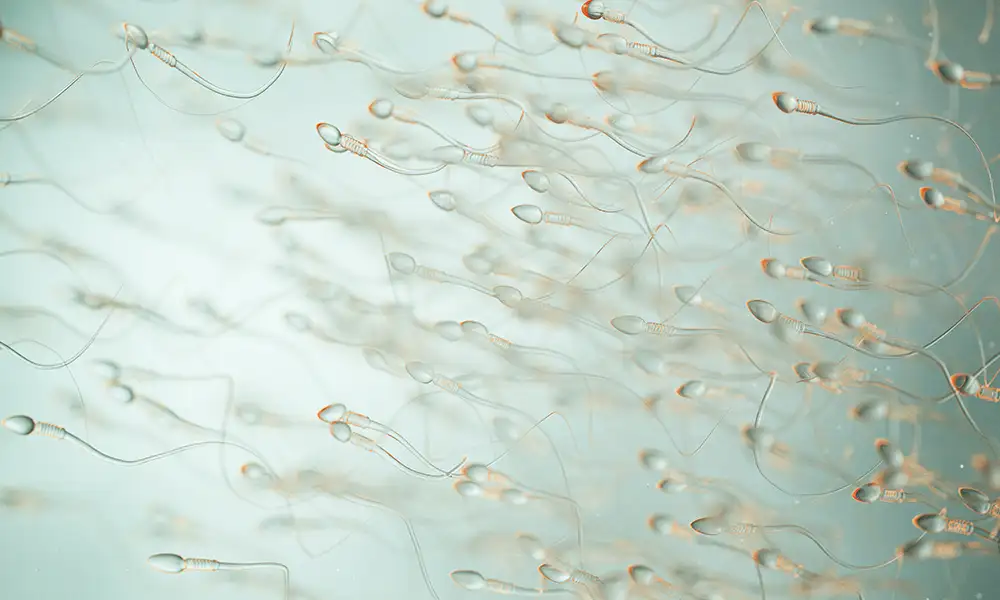Semen Analysis Trends - A 6 Year Study
- March 16,2022
- 2 Min Read

Studies show that a male’s suboptimal sperm count is solely responsible for about 20-30% of infertility cases that contributes to about 5-% of all infertility cases.(1)
As many as 2% of all men will exhibit suboptimal sperm parameters.(2)
It is heartening to see that the trends to oligospermia and azoospermia seem to be on a general down trend over the past 7 years. The median sperm count also seems to be rising.
Similarly, the trends of asthenospermia also seem to be decreasing. On analysis, cases of asthenospermia were found to be more commonly associated with oligospermia (p<0.001).
Sperm Morphology:
Head defects followed by mid-piece defects were the most common morphological defects in sperm and this trend was seen every year.
Indications for semen testing(3):
-
Assessment of male reproductive function and genital tract patency.
-
Appraisal of fertility potential and choice of suitable treatment modality for an infertile couple.
-
Measure the efficacy of male contraception (eg: vas occlusion and interventions including hormonal male contraception and other potential methods).
Factors affecting lab measurement of semen parameters(3):
-
Whether a complete ejaculate is collected. During ejaculation, the first fractions expelled are mainly sperm-rich prostatic fluids, whereas later fractions are dominated by seminal vesicular fluid.
-
The activity of the accessory sex glands, the fluids of which dilute the concentrated epididymal spermatozoa at ejaculation.
-
Abstinence time (2-7 days).
Factors influencing ejaculate(3):
-
Size of the testicles - influences the total number of spermatozoa produced per day.
-
Endocrine status.
-
Medications - Treatment with alpha-blockers or selective serotonin reuptake inhibitor (SSRI) antidepressants can inhibit vas deferens motility and also accessory sex gland emptying.
-
Supplements or non-prescribed medications such as anabolic steroids.
Reference limits for semen characteristics (WHO Manual 2021, 6th ed.)(3):
-
Sperm volume (ml): >/=1.4
-
Sperm concentration (million per ml): >/= 15
-
Total sperm number (million per ejaculate): >/= 39
-
Total motility (PR+NP,%): >/= 42
-
Progressive motility (PR,%): >/= 30
-
Immotile sperm (%): <20
-
Sperm morphology (normal forms,%): >/= 4
-
pH: >/- 7.2
References:
1. Aggarwal A, Mulgund A, Hamada A, Chyatte MR. A unique view on male infertility around the globe. Reprod Biol Endocrinol. 2015
2. Kumar N, Singh A. Trends of male factor infertility, an important cause of infertility: A review of literature. J Hum Reprod Sci. 2015;8(4):191.
3. World Health Organization. WHO laboratory manual for the examination and processing of human semen [Internet]. 6th ed. Geneva: World Health Organization; 2021 [cited 2022 Feb 14]. Available from: https://apps.who.int/iris/handle/10665/343208
Although oligospermia, azoospermia & asthenospermia seem to be decreasing at a gentle rate over the years, semen analysis is still an integral part of the evaluation of a couple who are unable to conceive (20-30% of all infertility cases are solely due to male infertility).
The results of one single ejaculated examination are enough to decide subsequent steps of an infertility investigation of the man. On the other hand, to define an exact baseline for an individual, it can be necessary to examine two or three ejaculates.
SUBURBAN DIAGNOSTICS OFFERS A FULL RANGE OF TESTING FOR BOTH MALE AND FEMALE INFERTILITY - BOTH RADIOLOGY AND PATHOLOGY TESTS.
Want to book a test? Fill up the details & get a callback
Most Viewed
Premarital Health Screening
- 20 Min Read
Typhoid - Signs and Symptoms
- 3 Min Read
Home Isolation Guidelines - Covid-19 Care
- 5 Min Read
HLA B27 Detection: Flow Cytometry & PCR
- 1 Min Read














